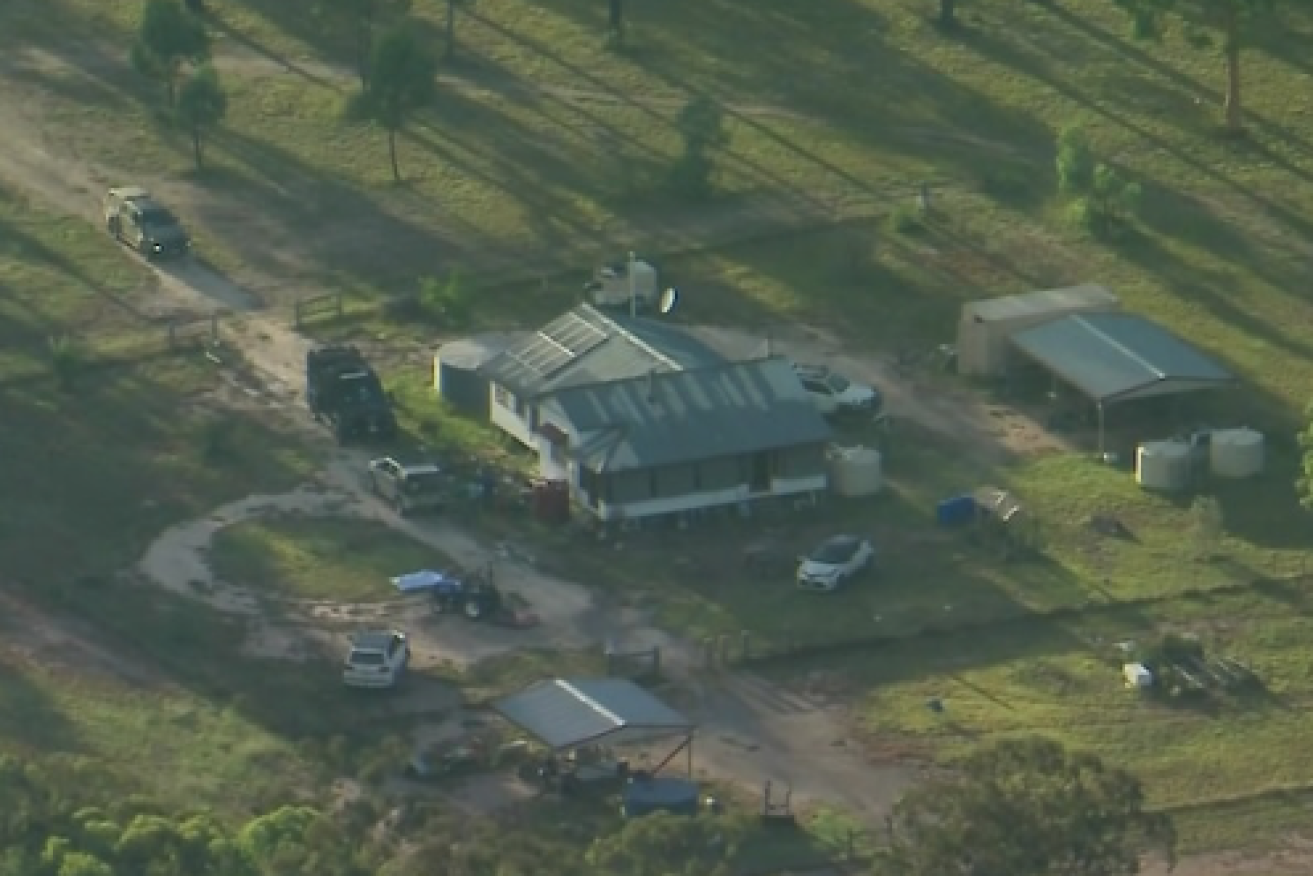Ambush shines a light on state’s secret fringe-dwellers – the ‘blockies’
Investigators are already finding links between this week’s police shooting horror and fringe groups who have become more militant, and less connected to mainstream society, writes Greg Hallam


The remote, off-the-grid house which became the scene of a slaughter this week when four police officers, and an innocent local resident, were ambushed and gunned down. (ABC image).
Planning decisions made by State Governments in the 19th and early 20th centuries to aid returned soldier settlement after the WW1, as well as the development of railway and timber towns which never eventuated , and the cult of “blockies”, are partially behind the tragic loss of two young police officers and a neighbour this week at Wiembilla on the Western Downs.
There is no doubt these dirt cheap blocks attract fringe dwellers in every sense of the world.
In basic terms long-standing planning approvals , some generations old , give as of right authority to build a house on what’s known as “dry block” subdivisions. Think no water or sewerage connections, and often no mains power. Councils do not have the power to overturn historic state government subdivision approvals.
A block of land and a relocatable house in these fringe communities can cost as little $100,000 and promise, mistakenly, access to the great Australian dream – the castle.
These communities in almost every situation exist in isolation from the surrounding agricultural areas, and without any of the social services city dwellers take for granted.
In their excellent 2017 research paper, “Place, identity and stigma: blocks and blockies of Tara”, Muhammad Makki and Kitty Van Vuuren examined the lack of connection between blockies, established rural town dwellers and agricultural residents.
In short, blockies were isolated in every sense of the word. Many deliberately so.
This trend has been occurring for over 40 years now across significant swathes of Queensland, resulting in the creation of very distinctive underprivileged communities, even shanty towns, well out of the big cities’ sights.
Communities between Tara and Chinchilla have featured regularly in police dispatches over the last few decades , sometimes making headlines in Brisbane.
As far back as 2008 former Western Downs Mayor Ray Brown openly questioned the wisdom of raising children on the Tara blocks , saying ‘ there is a small minority group who have chosen socially to live a certain way, and it concerns me greatly when children are involved”.
Sadly the necessary attendance at Tara blockies’ residences for welfare checks, domestic violence complaints, and the service of court or legal papers is an all too often task for local police .
It’s fair to say that the relative cheaper cost of accommodation is not the only attraction to these forgotten places.
Many blockies simply want to opt out of mainstream society and its rules. A lot of them are anti vaxxers , subscribe to conspiracy theories, and identify with right wing fringe politics.
The fact that Facebook postings by one of the Wiembilla murderers was virulently anti- police, identified with extreme hate groups in America ,and dismissed the Port Arthur Massacre as a stunt and conspiracy by the police and national and international intelligence agencies, only goes to reinforce that view.
During the 2018 historic big fires across the southern half of Queensland from Rockhampton below, many similar communities were identified in the Gladstone and Bundaberg hinterlands with hundreds of people quite lawfully living in shacks, caravans and lean to sheds. They resided on “timber town” blocks.
Basic research has identified anything up to 200 state government approved historic subdivisions in fringe city areas and rural Queensland ,with possibly as many as 3000 people currently residing in these places.
This is not simply a Western Downs problem, with parts of southeast Queensland having their own challenges. This is a whole of state problem.
We are destined to have more social dislocation, under-privilege – and tragedy – if all future dwellings in these fringe communities are not stopped in their tracks.
Hopefully, this horrible tragedy will raise the circumstances of these communities for all Queenslanders to see, and cause the State Government to retrospectively remove the right to build on historical subdivisions.
We need a Statewide Task Force to tackle this challenge, and fast.
Greg Hallam is a former CEO of the Local Government Association of Queensland and is an expert on Queensland’s remote communities. He writes occasionally for InQueensland about regional issues.












